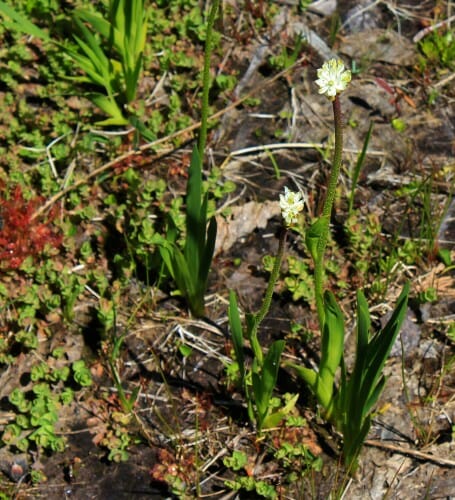09 Aug New carnivorous plant must balance trapping prey and being pollinated

Triantha occidentalis produces flowering stalks with sticky hairs that can trap insects. New research confirms that the plant can digest these trapped prey. DANILO LIMA
Botanists at the University of Wisconsin–Madison and the University of British Columbia have discovered a new carnivorous plant in western North America.
Triantha occidentalis makes its home in wetlands and bogs from Alaska to California and inland to Montana. In the summer, it shoots up tall flowering stems coated with sticky hairs that trap small insects like gnats and midges. The scientists discovered that the plant acquires more than half of its nitrogen by digesting these ensnared insects, a welcome treat in its nutrient-poor habitat.
This is the 12th known independent evolution of carnivory in the plant kingdom, and the first time the trait has been discovered in the Alismatales order, a group of largely aquatic flowering plants. It is also just the fourth established instance of carnivory in the monocots, one of the major groups of flowering plants.
“What’s particularly unique about this carnivorous plant is that it traps insects near its insect-pollinated flowers,” says lead author Qianshi Lin, who was a doctoral student at UBC at the time of the study. “On the surface, this seems like a conflict between carnivory and pollination because you don’t want to kill the insects that are helping you reproduce.”
However, the plant appears to be capable of sorting out friend from food.



